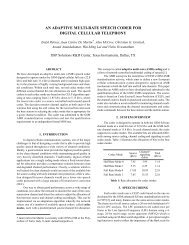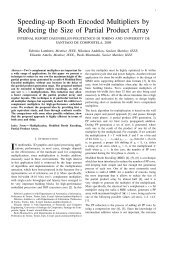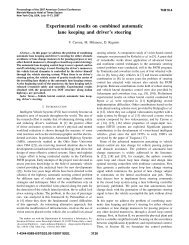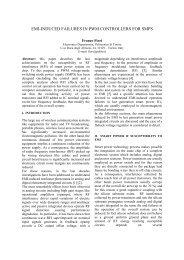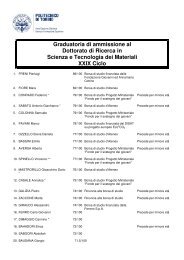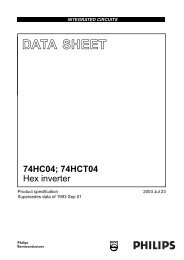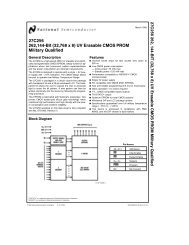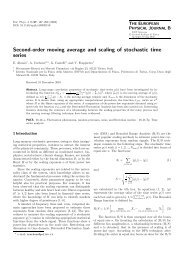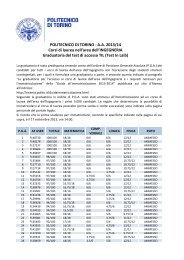You also want an ePaper? Increase the reach of your titles
YUMPU automatically turns print PDFs into web optimized ePapers that Google loves.
General-purpose<br />
Register File<br />
Figure 6 shows the structure of the 32 general-purpose working registers in the CPU.<br />
Figure 6. AVR CPU General-purpose Working Registers<br />
7 0 Addr.<br />
R0 $00<br />
R1 $01<br />
R2 $02<br />
…<br />
R13 $0D<br />
General R14 $0E<br />
Purpose R15 $0F<br />
Working R16 $10<br />
Registers R17 $11<br />
…<br />
R26 $1A X-register low byte<br />
R27 $1B X-register high byte<br />
R28 $1C Y-register low byte<br />
R29 $1D Y-register high byte<br />
R30 $1E Z-register low byte<br />
R31 $1F Z-register high byte<br />
All the register operating instructions in the instruction set have direct and single-cycle<br />
access to all registers. The only exception are the five constant arithmetic and logic<br />
instructions SBCI, SUBI, CPI, ANDI and ORI between a constant and a register and the<br />
LDI instruction for load immediate constant data. These instructions apply to the second<br />
half of the registers in the register file (R16..R31). The general SBC, SUB, CP, AND and<br />
OR and all other operations between two registers or on a single register apply to the<br />
entire register file.<br />
As shown in Figure 6, each register is also assigned a data memory address, mapping<br />
them directly into the first 32 locations of the user Data Space. Although not being physically<br />
implemented as SRAM locations, this memory organization provides great<br />
flexibility in access of the registers, as the X-, Y- and Z-registers can be set to index any<br />
register in the file.<br />
X-register, Y-register and<br />
Z-register<br />
The registers R26..R31 have some added functions to their general-purpose usage.<br />
These registers are address pointers for indirect addressing of the Data Space. The<br />
three indirect address registers X, Y, and Z are defined as:<br />
Figure 7. X-, Y-, and Z-registers<br />
15 0<br />
X - register 7 0 7 0<br />
R27 ($1B)<br />
R26 ($1A)<br />
15 0<br />
Y - register 7 0 7 0<br />
R29 ($1D)<br />
R28 ($1C)<br />
15 0<br />
Z - register 7 0 7 0<br />
R31 ($1F)<br />
R30 ($1E)<br />
10 AT90S8515<br />
0841G–09/01



